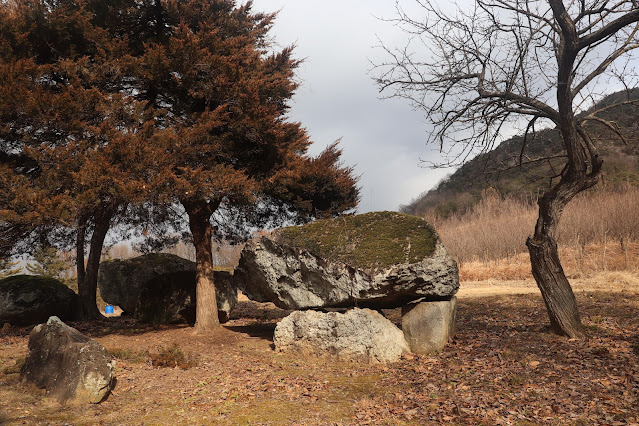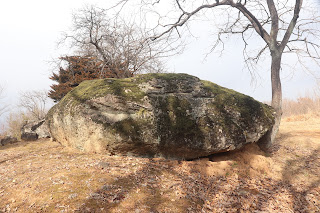용두동 지석묘 / 릉,묘,총
주소 : 광주광역시 서구 용두학동길 15 / 광주광역시 서구 용두동 25
용두동 지석묘 : 광주광역시 서구 용두동에 있는 청동기시대의 고인돌. 광주광역시 문화재자료 제 6호이다.
1984년 2월 29일 광주광역시 문화재자료 제 6호로 지정되었다. 고인돌은 남북을 축으로 하여 3열로 배치되어 있는데 오른쪽 열의 보존상태가 가장 완전하다. 현재 원형이 제대로 남아 있는 것은 10기이며, 덮개돌이 없는 굄돌7개가 흩어져 있는 것으로 보아 이전에는 2~3기가 더 있었을 것으로 추측된다. 10기의 고인돌 가운데에는 이 고장에서 보기 힘든 북방식 1기가 있으며 남방식이 3기, 나머지 6기는 굄돌이 없는 형식이다. 덮개돌은 모두 괴석형으로 이곳에서 1Km 정도 떨어진 송학산에서 채석하였다. 북방식인 3호 고인돌은 3개의 굄돌이 있는데 높이 48~65cm, 긴 축이 88~150cm, 짧은 축이 44~65cm로 덮개돌의 아랫부분이 탁자식으로 되어 있다. 그 밖의 굄돌로 보이는 조그만 괴석들은 높이가 대부분 50cm이며 가장 큰 것은 1.4m X 1.2m X 0.5m 이다.
고인돌은 청동기시대의 대표적 무덤 양식으로 우리나라 전지역에서 발견되고 있으며 동북아시아에서도 가장 많이 분포되어 있다. 특히 광주.전라남도 지역은 전국에서도 가장 많이 분포되어 있다. 광주에는 매월동.지석동 등의 17개 군집에 103기가 있는데, 전라남도 지역에 비하여 그 수량은 많지 않다.
Jiseokmyo in Yongdu-dong / Royal tomb, tomb, gun
Address : 15 Yongduhak-dong-gil, Seo-gu, Gwangju Metropolitan City / 25 Yongdu-dong, Seo-gu, Gwangju Metropolitan City
Jiseokmyo in Yongdu-dong : A dolmen in the Bronze Age in Yongdu-dong, Seo-gu, Gwangju. It is Gwangju Metropolitan City Cultural Heritage Material No. 6.
On February 29, 1984, it was designated as Gwangju Metropolitan City Cultural Heritage Material No. 6. Dolmen are arranged in three rows around the north and south, and the preservation state of the right column is the most complete. Currently, there are 10 units left in its original form, and it is estimated that there were two to three more units in the past, considering that seven stone stones without cover stones are scattered. Among the 10 dolmens, there is one north-style dolmen that is hard to see in this town, with three south-style dolmens and the other six without dolmens. All of the cover stones were shaped like bizarre stones, and were quarried at Songhaksan Mountain, about 1km away from here. The north-style dolmen No. 3 has three dolmens, 48-65cm in height, 88-150cm in long axis, and 44-65cm in short axis, and the lower part of the cover stone is table-type. Other small stones that appear to be dolmens are mostly 50 cm high and the largest are 1.4 m × 1.2 m × 0.5 m.
Dolmen are a representative tomb style of the Bronze Age and are found throughout Korea, and are the most distributed in Northeast Asia. In particular, Gwangju and Jeollanam-do are the most distributed in the country. Maewol-dong in Gwangju.There are 103 units in 17 clusters, including Jiseok-dong, and the quantity is not large compared to that of Jeollanam-do.








댓글
댓글 쓰기